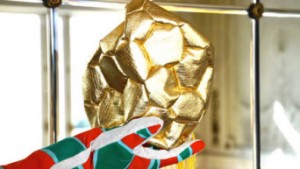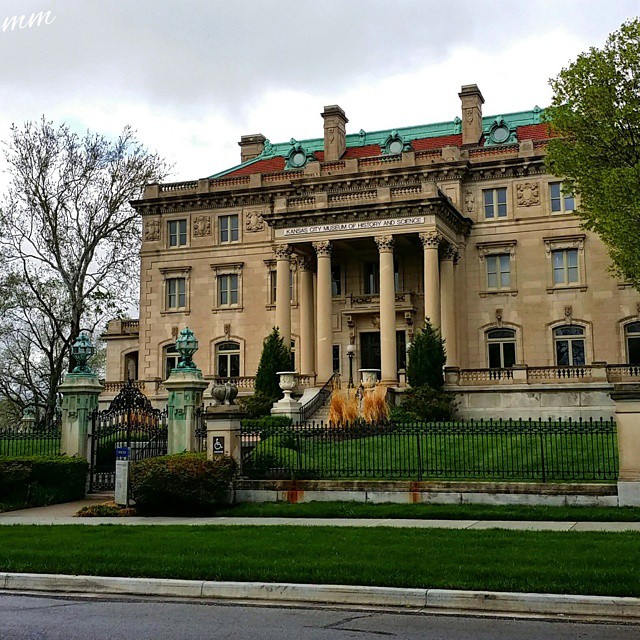 Original furnishings of the Long family and other historical artifacts are coming back into Corinthian Hall and the Carriage House of the Kansas City Museum in a new exhibition titled Divining the Museum: Visions of Past, Present, and Future, on display from May 7 through June 13, 2015. Curated by Max Adrian and Paige Beltowski, and featuring Kansas City artists and students from the Kansas City Art Institute, Divining the Museum is a temporary exhibition. Guided exhibition tours are free and will be available on the hour from 10 a.m. to 4 p.m. Thursday-Saturday, May 7-30, and Wednesday-Saturday, June 3-13.
Original furnishings of the Long family and other historical artifacts are coming back into Corinthian Hall and the Carriage House of the Kansas City Museum in a new exhibition titled Divining the Museum: Visions of Past, Present, and Future, on display from May 7 through June 13, 2015. Curated by Max Adrian and Paige Beltowski, and featuring Kansas City artists and students from the Kansas City Art Institute, Divining the Museum is a temporary exhibition. Guided exhibition tours are free and will be available on the hour from 10 a.m. to 4 p.m. Thursday-Saturday, May 7-30, and Wednesday-Saturday, June 3-13.
An exhibition-opening reception will be held on Saturday, May 2 from 5-9 p.m. at the Kansas City Museum located at 3218 Gladstone Blvd in Kansas City, MO, and it will include performative readings starting at 7:30 p.m. that tell stories inspired by the layered history of the Museum and its myriad inhabitants over the years. An RSVP is required for this reception as spaces will be limited. Please email your RSVP to anna.tutera@kcmo.org.
Divining the Museum showcases contemporary artwork including installations, sculpture, ceramics, and photography alongside original objects from the Museum’s collection. Adrian and Beltowski propose imaginative and modern relationships with the historical artifacts and materials to catalyze conversation about the reinterpretation, relevancy, and meaning of history. The exhibition delves into how and why the boundaries between fact and fiction are blurred, even subconsciously, when new audiences are learning about historic events. Divining the Museum poses this question and others in many forms to stimulate curiosity, dialogue, and dreams of the future Kansas City Museum.
Divining the Museum is the first exhibition of 2015, and it sets the tone for the year, aiming to honor past aspirations and boldly face existing ones.
“We are delighted to work with emerging artists and students to further enliven and activate the Museum,” Kansas City Museum Executive Director Anna Marie Tutera said. “There are many talented artists and creatives in Kansas City, and we endeavor for the Museum to make a meaningful contribution to the City of Kansas City’s ‘Arts Convergence Plan.’ Visitors have been asking to see original artifacts and archival materials, and it is time to display them so that we can all imagine and explore together how to hybridize historic and contemporary elements in the future Museum.”
Over many decades, innovators have worked tirelessly to advance and restore the Kansas City Museum. This year, the Museum celebrates its 75th anniversary as a public museum, and Tutera plans to actively engage Kansas City’s arts and culture community to plan for the Museum’s restoration and rehabilitation. Tutera notes that when the exhibition ends and the contemporary artwork is de-installed, the historical objects will remain on display through the end of 2015.
Built in 1910 as a private residence and converted to a public museum in 1940, Corinthian Hall and its estate stand as both a monument and palimpsest of Kansas City history. This true American palace—built by lumber magnate, civic leader, and philanthropist Robert Alexander Long—offers an architectural, artistic, and historic legacy rooted in a deep sense of place and creative vision. Currently under renovation, Corinthian Hall and the buildings that comprise the Kansas City Museum reveal visible and enduring traces of the past, as well as the promise of what is to come.
Many visitors to the Kansas City Museum are surprised to learn that the Museum has a very small collection of original furnishings from Corinthian Hall. After the deaths of Mrs. Ella Long and Mr. Long (1928 and 1934 respectively), the two Long daughters, Sallie America Long Ellis and Loula Long Combs (a world famous equestrienne and owner of Longview Farm in Lee’s Summit, Missouri), removed their favorite items from Corinthian Hall and had a two-day auction in 1934 to sell the remaining contents. In 1939 the Long daughters donated Corinthian Hall and its buildings to the Kansas City Museum Association to use for their new museum, which opened in 1940 as the Kansas City Museum. The original Corinthian Hall furnishings that are part of the Museum’s collection today were donated to the Museum from Long family members and others. In addition, the Museum has more than 20 of the Long family carriages, as well as Loula’s tack, trophies, and ribbons. For more information about the Kansas City Museum and the exhibition, visit www.kansascitymuseum.org.
Background on Kansas City Museum
Located at 3218 Gladstone Boulevard in the Historic Northeast community of Kansas City, Missouri, the Kansas City Museum is comprised of five original buildings, including the mansion Corinthian Hall, which was built in 1910 by Robert Alexander Long. The estate became a public museum in 1940. It is owned by the City of Kansas City, Missouri and operated and managed by the City of Kansas City, Missouri Parks and Recreation Department. The Collection contains more than 100,000 artifacts and several thousand more archival materials that interpret Kansas City and regional history.
